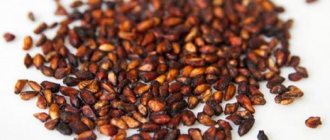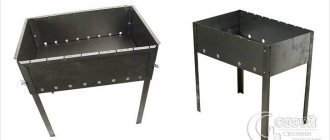Today, one of the most popular garden flowers is lupine, which resembles a colorful Christmas tree made of bright petals. By planting it in your garden, you absolutely cannot go wrong, since along with a neat and lushly flowering plant you will receive a minimum of care requirements and difficulties associated with growing and propagating plants. In this material you will learn what types and colors of this plant there are, and you will also learn how to grow lupine; planting and care in open ground is also described in the article.
Lupine: planting and care in open ground
Decorative flower or pure utility?
Contrary to popular belief, lupine is not only an ornamental, but also a very useful plant, the raw materials of which are used in various areas of human activity, for example:
- Lupine seeds are used in food production, the manufacture of medicines and medical plasters, soap making, the production of cosmetics, and plastics;
- stems often serve as raw materials for making various decorative products;
- fresh flowers often act as an element of decoration for special wedding zones, photo zones, etc.;
- The straw from this flower is used as a raw material in the paper industry.
The fodder variety of this plant is grown to feed livestock; farms involved in fish farming often feed fish with the seeds of this plant.
Some varieties of lupine are used as animal feed, others are an excellent green manure for other crops, and in addition to this, there are many other uses for this plant
In addition, any variety of lupine can act as a valuable fertilizer, green manure - a plant that is grown specifically for subsequent digging into the ground for the purpose of:
- improve soil structure;
- stop weed growth;
- enrich with nitrogen.
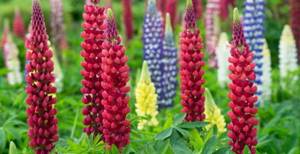
One hectare of lupine in terms of nutritional value of the total green mass when dug into the soil has an effect equivalent to 20 tons of manure
For all its benefits, lupine is an extremely unpretentious plant; there are no difficulties in caring for it, even when growing in large quantities. That is why this plant can be called widespread, despite the fact that its original habitat was the northern part of America.
Benefits and contraindications of growing lupine as green manure
Refers to plants that “rejoice” in the sun and moisture. It has large leaves that are always turned towards the sun. But lupine is not picky about soil. It may also be useful for you to learn about which green manures are most suitable for cucumbers, and how to choose them.

Lupine is grown not only as green manure, but also to obtain valuable oil. It is a powerful antioxidant.
Lupine is a green fertilizer that is completely easy, cheap and effective to grow. The following positive qualities of culture can be identified:
- Powerful root system . The roots can grow to a level of 1-1.5 m. They are capable of dissolving monohydrogen phosphates and sending them to the upper layers.
- Lupine, grown as green manure, makes the soil looser and saturates it with nitrogen.
- Thanks to this green fertilizer, you can restore fertility to poor soils with high acidity and sandy loam . The composition contains a component such as an alkaloid, due to which acidic earth becomes alkaline.
- Literally heals the soil . Thanks to the alkaloid, reliable protection against wireworms and harmful bacteria is created.
- Lupine is a fast-ripening green manure . A fully developed plant can be obtained within 50 days from planting.
In the video - lupine as green manure:
But it is not always possible to plant it. To do this, you need to pay attention to its predecessor. You cannot plant green fertilizer after leguminous and cereal crops. Neighborhood with cruciferous and perennial legumes is also unacceptable. Lupine can grow in one place for no more than 4 years. Read about growing and caring for turnips in the garden at this link.
Varieties and colors of lupins
The diversity of a plant such as lupine is largely determined by the huge number of areas of human activity in which it is used. So, if we divide the plant into main categories, we can say that there are lupins:
- annuals;
- living two years;
- perennial;
- feed varieties.

Existing varieties of lupins are divided into groups into plants that can bloom for one or two years, as well as perennial flowers
In this material we will talk specifically about garden lupins; most often annual or perennial plants are planted, among which the following varieties are considered the most popular:
- “hybrid” is the most frequent visitor to vegetable gardens in the northern part of the country;
- “dwarf” - lush flowers of a smaller size than we are used to seeing in lupine, but just as bright and attractive to the eye;
- “changeable” – a variety whose flowers have a complex structure and unconventional bright colors, compared to other varieties;
- “Hartwega King” is a frost-resistant perennial variety that grows and is constantly found even by residents of places located near the taiga.

Lupine variety "Apricot" has one of the most spectacular colors
As for the color range of plants, lupine can actually be called a rainbow, it contains so many different shades. The following hybrid varieties and their color variants have gained particular popularity among Russians due to the difficult climate:
- soft pink variety "Schlossfrau";
- violet-violet “Royal Ruby”;
- creamy white shade of the Burg Fräulein variety;
- snow-white variety "Albus";
- carmine shade of the varietal hybrid “Edelknabe”;
- bright white-blue hybrid “Castelein”;
- apricot-peach hybrid “Apricot”;
- red-scarlet version of the Carmines variety;
- traditional pink and white variety "Princess Julianna";
- minaret is a variety with all sorts of bright colors of inflorescences, most intensely expressed at the lower levels and fading towards the upper levels.

Tree lupine grows only in warm southern regions
It must be said that in the southern territories of the country and abroad, the “tree-like” variety of lupine has also gained particular popularity, but, unfortunately, in central Russia and in the conditions of the northern regions, it would not be able to survive the winter, so it is unlikely to be found.
Prices for lupine seeds
lupine seeds
Annual lupine as green manure
Lupine contains in its flowers, leaves and roots a large amount of microelements and nutrients with which it enriches the soil:
- Phosphorus.
- Nitrogen.
- Potassium.
- Magnesium.
Most importantly, it is one of the best suppliers of biologically active nitrogen.
It improves and restores the soil. Moreover, in terms of green mass it is ahead of many other green manure plants. In Europe it is considered the most valuable fertilizer for the soil. In our country, green manure crops of lupine are not yet so common. For summer residents, this is a good alternative to manure, which is now expensive, and sometimes there is simply nowhere to get it. Of all the varieties, blue lupine is considered the best for sowing as green manure. It grows much faster than white or yellow. 2 months after sowing it is ready for mowing.
Lupine should be removed at the time when buds appear on it. A little later, the plant’s stem becomes stiff and will take longer to decompose in the soil, making it harder to mow.
Lupine, like all legumes, is also a source of vegetable protein, which is very valuable for raising farm animals. And if you consider that it can be grown 2-3 times per season, then you can rightfully call lupine a very valuable plant.
Lupine: growing from seeds
Growing lupine from seeds is not so difficult, especially considering the fact that most varieties of this plant are adapted to cope with harsh environmental conditions. Let's begin to consider the agricultural technology of cultivating such coveted flowers.

It is better to grow lupine in a pot
Sowing seeds for seedlings
First of all, you need to figure out when to plant lupine. In total, there are three time periods that are most suitable for planting seeds, which will vary depending on the circumstances of growing the plant and your preferences. Let's look at them in the table below.
Table 1. When to plant lupine seeds in the ground
| Period | Conditions |
| Late February-early March | Planting lupine seeds during the period indicated in the heading of this column should only be carried out if you:
|
| Mid April | In mid-April, or a little later (or earlier), you will plant the seeds, provided that you plan to immediately pour them into open ground. However, two important nuances should be taken into account:
|
| Mid - end of October | Planting seeds in open ground can be done not only in spring, but also in autumn, and there are practically no contraindications. Thus, flower seeds planted in October will not have time to grow before the onset of cold weather, and therefore will begin to ripen in the ground, stored during the winter in conditions that are comfortable for them. |

Properly preparing the soil is one of the main tasks of a gardener growing lupine.
The main task at the stage of sowing lupine seeds for seedlings is to properly prepare the soil. So that the seeds can develop properly in it and become strong, you should prepare loose soil mixed from:
- turf in a volume of 2/5 of the future mixture;
- peat in a volume of 2/5 of the future mixture;
- sand in a volume of 1/5 of the future mixture.
Before sowing the seeds, it will be very useful to mix them with self-prepared powder from the tubers of old garden lupins, which may have grown in your garden bed until now. This move will help activate the development of bacteria that absorb nitrogen, which is necessary for the proper growth of lupine.
The resulting mixture of roots and seeds is immersed in a pot with pre-mixed soil, or directly on an open bed, digging them shallowly, at a level of 2-3 centimeters in depth, and sprinkling them on top with a thin layer of dry soil, so that they are completely covered. closed.
If you want your crops to germinate at the same time, plant them at the same time, moisten the soil in the pot shallowly, and then, creating a greenhouse effect, cover the surface of the pot using:
- wet gauze;
- plastic bag;
- plastic cover;
- glass, etc.
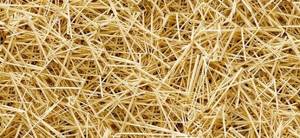
You can mulch a bed with lupine using straw
Of course, it will be difficult to cover the bed with gauze, but it can be mulched using natural ingredients, for example:
- straw;
- spruce branches;
- hay, etc.
By the way, if you plant seeds in open ground in the fall, you will need to mulch the flowerbed more seriously, using nutritious peat.
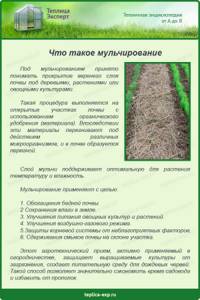
What is mulching
Please note: if you took seeds for sowing from neighbors whose lupins you especially liked, we must warn you that one of the consequences of seed propagation little known to gardeners is the not guaranteed inheritance of the color of the petals of the mother flowers by new plants. Lupine, grown from seed, is usually the centerpiece of gardening experiments. At the same time, the following colors are perfectly transferred from an adult plant to a young one, as indicated by plant propagation:
- pink;
- violet.
These shades are dominant and survive well, while the white color of the petals will most likely fade into oblivion through similar reproduction.

Reproduction by cuttings
Therefore, if you want to grow a rare variety of lupins, it is better to propagate its cuttings, that is, like this.
- From an adult plant, capturing part of the root collar.
- We cut out the so-called renewal bud.
- We plant the resulting material in previously prepared soil, the composition of which should be similar to the composition presented in this section.
After the seedlings hatch, the film that covers the pot to create a greenhouse effect must be removed so that the thin leaves do not have to fight (and most often lose) with such a serious and extremely noticeable obstacle for them.
The plant can be replanted to a permanent place of growth (in open ground) once real leaves appear on the seedlings, in the amount of 2-3 pieces. You should not delay this, since the rapidly developing root system of lupins, growing in the form of rods, may prevent you from doing this without difficulty in the future.
Peat prices
peat
Planting seedlings in open ground - in the garden
If you sowed the seeds immediately in open ground, then you can skip the planting procedure. However, if you live, for example, in Siberia, and wisely first planted the seeds in a pot in which you grew seedlings in a house or apartment, then now is the time to plant lupins in the garden.

It is important to plant the plant in the ground on time
Planting is carried out in the spring, which, and at a time that, unfortunately, does not make it possible to properly prepare the land for this process. Therefore, preparations need to be made in advance, in the fall.
For lupins, you need to select a sunny, open area with one of the following soil types:
- sandy loam;
- slightly alkaline loamy;
- slightly acidic.
If there is not enough sand in the ground, it can be added artificially, and then you need to balance the acidity or alkalinity of the soil by carrying out the following procedures:
- lime or dolomite flour is added to excessively acidic soil, calculating the amount of material according to the following ratio: 5 kilograms of flour per square meter of land;
- If the soil is too alkaline, it is flavored with peat; the ratio of the material will be the same as in the case of flour.

Fertilizer for lupins is an important assistant
In the spring, seedlings are dug into a bed previously marked out using a rake, taking into account a distance of approximately 40 centimeters left between each other. If you planted plants as seeds, then this distance must also be maintained.
Caring for lupine planted in open ground
As we already mentioned above, you will not face any difficulties in handling lupine growing in open ground. You just need to take into account some nuances and follow them so that the flowers delight you throughout the growing season.
So, if you have chosen a perennial variety of the plant we are considering, then in the first year of its life in the garden you will need to regularly:
- loosen the soil in the flower garden so that water is retained in it longer and oxygen is actively supplied;
- promptly remove weeds, which are very, very difficult for lupine to live with.
In addition, lupine requires regular hilling, since the root collar, under the influence of natural processes, will periodically be exposed, and the lateral rosettes of the plant, at the same time, become isolated.

A perennial bush lives a maximum of 6 years
The lifespan of a perennial lupine bush is approximately 5-6 years, after which the old plants must be removed, since its main part dies off, and the flowers no longer please you with either the quantity or quality of the inflorescences.
Tall lupins of any type require support for growth, since their stems often break in bad weather under the influence of actively shifting air layers. To do this, you need to prepare supports for the flowers, which you can do:
- from metal pins;
- wooden sticks;
- other materials.
If you want to enjoy lupine blooms right before frost, you will need to prune the flowers that are starting to fade before they dry out. Then the perennial lupine will once again delight you with flowering during the growing season.
Lupines need moderate watering. However, after planting seedlings or grains directly into the ground, it should be plentiful, right up to the onset of the summer heat.

These flowers need moderate watering
Then watering should be carried out once every two to three days, depending on the weather and the presence or absence of natural rainfall. The soil must be watered efficiently, since you remember that the lupine root is long and narrow and goes deep into the thickness of the earth.
Caring for a plant in open ground
The flower is very unpretentious in care: it has the ability to fight off parasites and enrich the earth. But still, when plantings are deliberately planted for some purpose, they should be provided with the necessary care.
Watering
The frequency of watering mainly depends on the soil, the variety, and the planting period. Plants that have recently been planted need much more moisture. In other cases, watering should be reasonable.
Lure
Considering that lupins are considered green manure, they do not require special bait. Superphosphate or potassium chloride is added to the soil for long-term species at the beginning of flowering. During the flowering period, it is advisable to sprinkle a couple of spoons of ash near each bush.
When breeding plants with branched pleiochasia, initially the central part should be applied to the fertilizer, followed by the side flowers. Group baits are added when the presented technology was not done at the beginning of the year.
Trimming
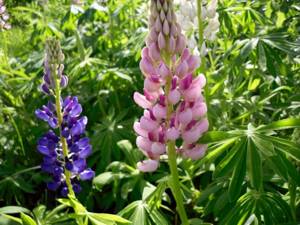
In order for flowers to preserve their beauty until winter, it is necessary to cut off dried inflorescences and branches in a timely manner. The appearance of young offspring promotes secondary flowering in August.
Weed control
In the first year of planting, the plant needs systematic weed removal and hilling. The above helps the growth of lateral roots, and, of course, long and vigorous flowering. Alkaloid types release specific elements into the soil that are fatal to weeds, so weeds do not appear in the garden next to such crops.
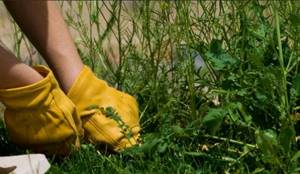
What time to collect seeds
After completion of formation, the lupine bean becomes covered with cracks, and seeds fall out of it in different directions. In order to pick them up in time before they spill out, it is recommended to cut the fruits as soon as they have turned a little yellow. The cutting will need to be done a couple of times until you have the desired number of beans.
Winter care
Even if some plantings are able to survive even very severe frosts, it would not be superfluous for them to have shelter for the winter. If lupins are grown in open ground, they are tied up because of the high probability that the tall bushes can be broken by the wind.
How and when to fertilize lupins growing in open ground
Lupines need to be fed with the onset of the second year of growth, in the spring, using mineral fertilizers that do not contain nitrogen. So, the most popular among gardeners are:
- superphosphate;
- calcium chloride.
So, the ratio of the first and second named fertilizers per square meter of soil will be as follows:
- superphosphate will need 20 grams;
- calcium chloride is only 5 grams.
You will need to feed the plant in this way every subsequent spring of the plant's life, with the exception of the year when you decide that it is time to uproot the old bushes and plant a new plant.
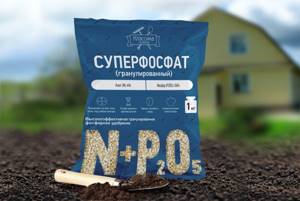
Superphosphate is a must-have fertilizer in a gardener’s arsenal.
Superphosphate prices
superphosphate
Diseases and pests to watch out for when growing lupine
Like any other plant, lupine is susceptible to various diseases, and is also often attacked by various pests that threaten its life, or at least its appearance, which is, however, the same thing for a gardener.
Thus, during the period of bud formation, lupine is very often inhabited by aphids, which eat the flesh of the plant. A little later he is attacked by the so-called:
- germ flies;
- nodule weevils.
Only thorough spraying with insecticides will help get rid of annoying insects. For example, the industrial drug “Taboo” can help eliminate all of the listed types of pests.
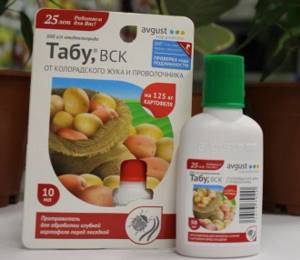
Taboo
As for diseases, lupine is most often affected by:
- Fusarium wilt, in which a bacterial fungus attacks the root system of a plant, causing simultaneous wilting of the entire plant;
- gray or brown rot affecting the stem, leaves and flowers of the plant;
- Phomopsis, in which the plant stems dry out;
- rust, in which orange pustules form on the body of the plant, etc.
Lupine diseases are also effectively eliminated by industrial treatments. However, you won’t have to take care of them if you follow acceptable agricultural practices for growing the plant.

Lupine suffers from many different ailments, however, not often
So, first of all, remember about the correct crop rotation of lupine, which says that it is possible to re-seed the area where the plant in question previously grew only three years after harvesting the old bushes. However, after some other crops it is even preferable to plant lupine. Thus, it grows well after cereal crops, the remains of which saturate the soil with the substances necessary for this plant.
How to care
In the first year after planting the crop in open ground, care involves removing weeds and maintaining the soil in a loose state. Also, do not forget about watering. If the root collar of the crop is exposed, then the stem will have to be earthed up. At the initial stage of development, the formation of the aerial part occurs slowly. Lupine intensively grows its root system, so it requires watering.
In the second year, care involves timely hilling and fertilizing. Old crops lose their decorative function, flowering is not so abundant, so lupine plantings need to be renewed every 4-5 years.
If the area where lupine grows is exposed to frequent and strong winds, then the bushes should be tied to wooden pegs. To prolong flowering, it is necessary to remove already faded flowers. This activates the crop to bloom again, which can be observed in August. In addition, withered buds give the bush an unattractive appearance.
If you used perennial lupine for planting, then you can leave it for the winter. To do this, it will have to be mulched with peat or sawdust. In this way, the root can be prevented from freezing. If autumn is dry, then perform moisture-recharging irrigation. But the video from this article will help you understand how to choose a sprinkler for watering your garden.
On the video - how to grow and care for Lupine:
When the plant is already 2 years old, it is necessary to feed it. This must be done before flowering begins. The following types of fertilizers can be applied:
- superphosphate and potassium chloride 2:1 per 1 m2;
- a couple of spoons of ash for each plant;
- organic fertilizers;
- on sandy soils, fertilizing with magnesium or dolomite flour is necessary.
When the formation of buds is observed, the plant may be affected by aphids or sprout flies. To combat them, it is necessary to treat plants with insecticides. Lupine can also be affected by diseases. Most often these are rot, wilt, spotting and rust.
There will be no need to fight pests and fears if you adhere to all agrotechnical rules. The first thing is the rules of crop rotation. The plant can be re-placed on the site only after 3 years.
How to collect lupine seeds correctly
In order for the plant to grow healthy and strong, you also need to learn how to collect lupine seeds on time. So, this is done only after the fruit has ripened, which lets you know that the seeds inside it are ready by cracking. However, when the fruit spontaneously opens, the seeds fall out of it and scatter chaotically, subsequently, you lose the opportunity to grow them according to the rules.

Lupine seeds
To prevent this from happening, seeds must be removed from the fruit when it:
- will turn slightly yellow;
- will begin to dry out.
You will have to carry out the procedure of removing seeds several times and from several bushes in order to increase the number of potentially grown bushes.
Collection of planting material
At the end of flowering, several dry inflorescences should not be removed. From them you can obtain seed material. The pod should be dark in color and dry. It is advisable to collect seeds in sunny weather. If seed material is collected in damp weather, they will begin to rot.
The seeds are removed from the pod, laid out on paper and left to dry in a warm place. Direct sunlight should be avoided. After this, pour into a glass container and store until sowing. In addition to a glass jar, you can use fabric or paper bags.
Let's sum it up
Lupine is an unpretentious plant that amazes gardeners, both professionals and amateurs, with its beauty. This flower is especially loved by residents of the northern regions of Russia, as it grows without any difficulties in a sharply continental climate. Growing lupine from seeds yourself is not difficult. We told you exactly how, so don’t be afraid to conduct a garden experiment. If you doubt your abilities, it is better to grow seedlings at home and then plant them in open ground.




